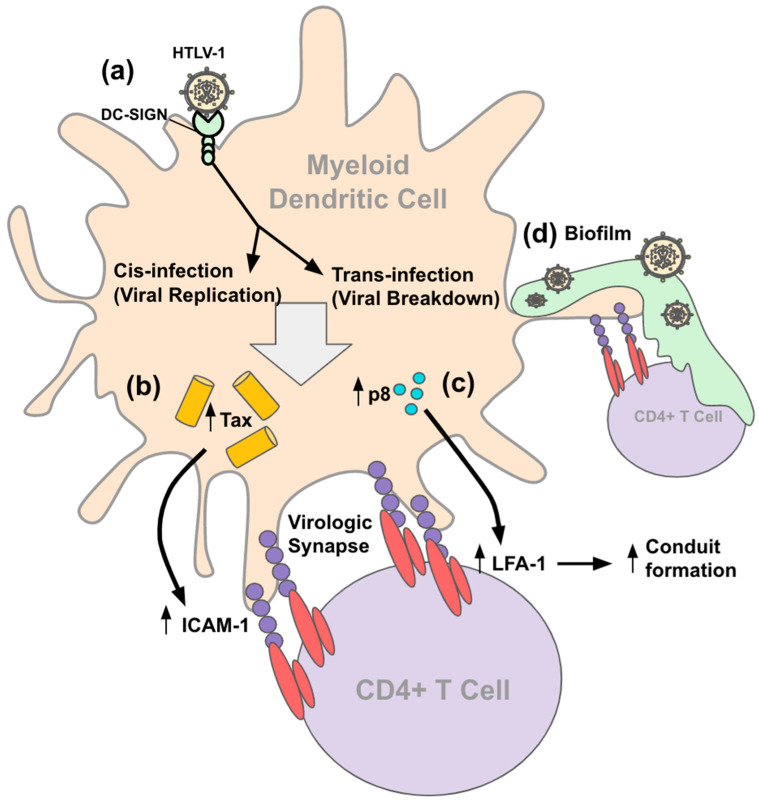Figure 2.
HTLV-1 interaction with DC. (a) HTLV-1 binds DC-SIGN, Glut-1, NRP-1, and/or HSPG receptor on DC cell surface. DC-SIGN is the most important receptor on DCs. HTLV-1 then enters the DC and undergoes viral replication to infect the DC in a process called cis-infection. Alternatively, HTLV-1 enters the DC and undergoes viral breakdown to be processed and presented on MHC surface receptors (not pictured) in a process called trans-infection. DCs spread HTLV-1 infection to CD4+ T cells through the formation of virological synapses, conduit formation, and viral biofilms. (b) HTLV-1 Tax protein accumulates in the DC and induces increased ICAM-1 expression on the surface of the DCs. Increased ICAM-1 allows for more efficient binding to CD4+ T cells via LFA-1 interaction. ICAM-1/LFA-1 interaction allows for the formation of virological synapses where HTLV-1 components are exocytosed to and concentrated within to increase exposure of T cells to viral particles for infection. (c) HTLV-1 p8 protein also builds up within the DC and induces increased LFA-1 protein expression on T cells. Increased LFA-1 expression functionally allows for conduit formation between DCs and T cells to allow for the spread of infection over greater distances versus neighboring cells. (d) Viral biofilms form on the surface of the DC and act as reservoirs for viral growth to allow the spread to neighboring CD4+ T cells.

